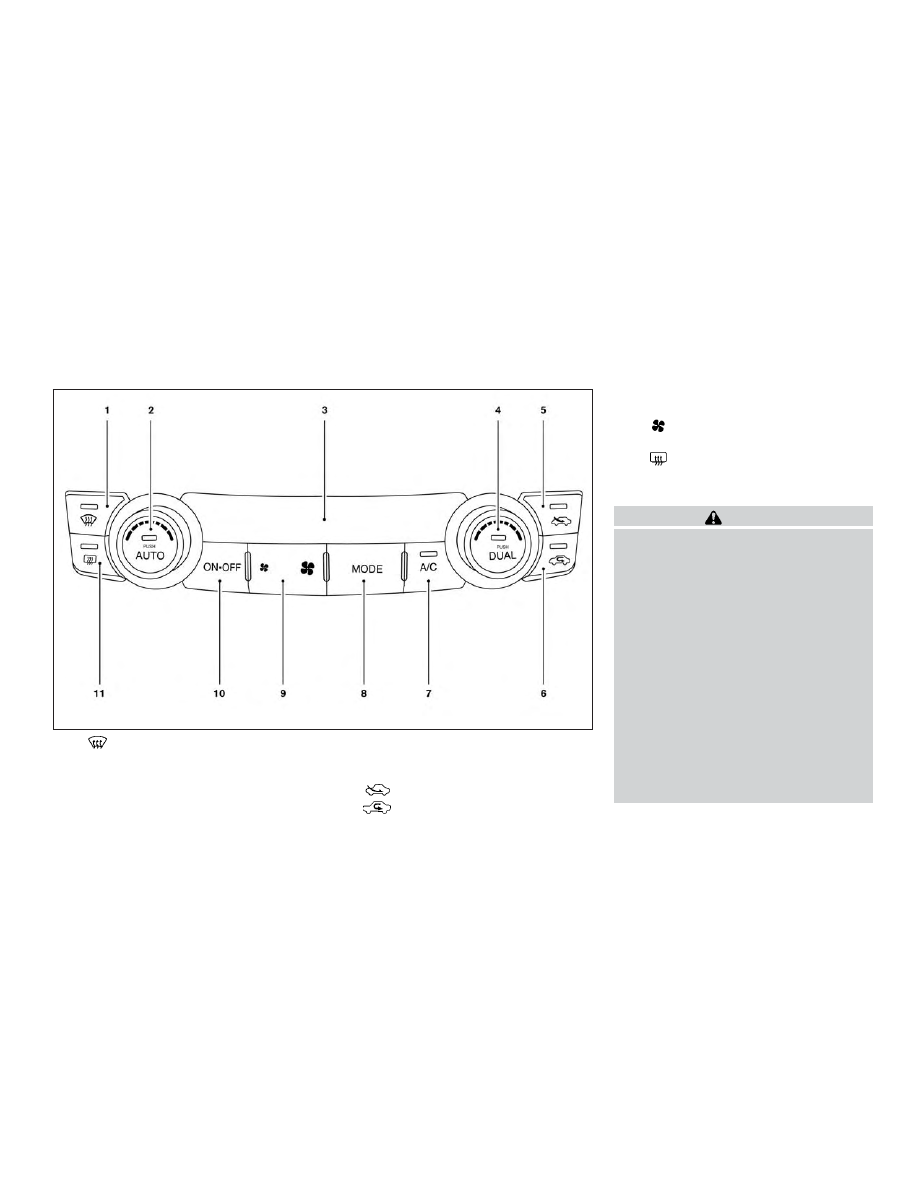Nissan Altima (2018 year). Instruction - part 13

1.
Front defroster button
2.
Temperature control dial (driver’s
side)/AUTO (automatic) climate
control button
3.
Display screen
4.
Temperature control dial (passen-
ger’s side)/DUAL (passenger’s side
temperature control) button
5.
Fresh air intake button
6.
Air recirculation button
7.
A/C air conditioner button
8.
MODE (manual air flow control)
button
9.
fan speed control buttons
10.
ON-OFF button
11.
Rear window and outside mir-
ror (if so equipped) defroster
switch
WARNING
∙ The air conditioner cooling function
operates only when the engine is
running.
∙ Do not leave children or adults who
would normally require the assis-
tance of others alone in your vehicle.
Pets should also not be left alone.
They could accidentally injure them-
selves or others through inadvertent
operation of the vehicle. Also, on hot,
sunny days, temperatures in a closed
vehicle could quickly become high
enough to cause severe or possibly
fatal injuries to people or animals.
∙ Do not use the recirculation mode for
long periods as it may cause the inte-
rior air to become stale and the win-
dows to fog up.
Start the engine and operate the controls
to activate the air conditioner.
LHA2244
HEATER AND AIR CONDITIONER
(automatic) (if so equipped)
Monitor, climate, audio, phone and voice recognition systems
4-19